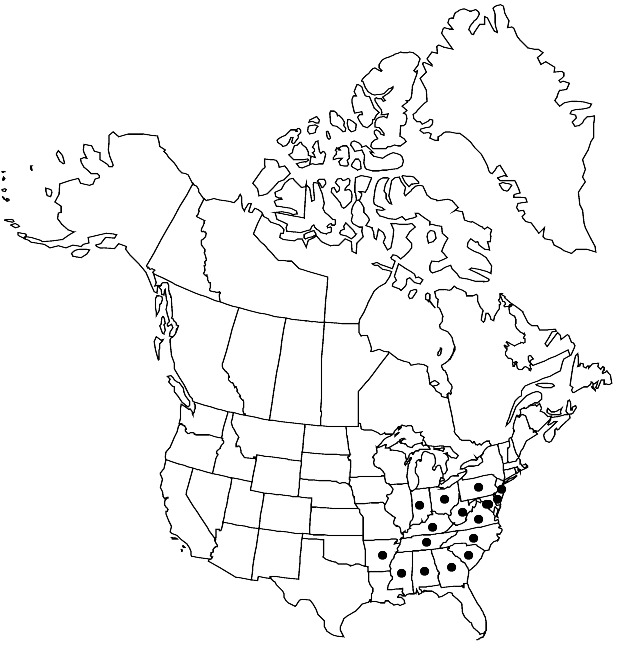Cardamine angustata
Bot. Jahrb. Syst. 32: 349. 1903.
Perennials; usually glabrous, rarely sparsely pubescent. Rhizomes (tuberiform, fragile) moniliform, segments fusiform, 3–6 mm diam. (fleshy). Stems erect, unbranched, 1.2–3(–4) dm, glabrous or pubescent. Rhizomal leaves 3-foliolate, to 24 cm, leaflets petiolulate or subsessile; petiole (3–)5–12(–16) cm; lateral leaflets subsessile or petiolulate (0.2–1 cm), blade similar to terminal leaflet or smaller; terminal leaflet (petiolule) (0.2–)0.5–1.5(–2) cm, blade broadly ovate to rhombic-obovate, 1.5–6(–8) cm, base usually cuneate, rarely subtruncate, margins coarsely dentate to crenate or 3-lobed, surfaces puberulent or not. Cauline leaves 2 (or 3), 3-foliolate (usually alternate, rarely opposite, different in morphology from rhizomal), petiolate, leaflets petiolulate or sessile; petiole 0.5–2 cm, base not auriculate; lateral leaflets sessile, blade similar to terminal, smaller, margins usually dentate, rarely entire; terminal leaflet sessile or petiolulate, blade narrowly lanceolate to narrowly oblong or oblong-lanceolate, 2–7 × 0.3–0.6 cm, margins minutely puberulent. Racemes ebracteate. Fruiting pedicels ascending to divaricate, 15–40 mm. Flowers: sepals oblong, 5–7.5 × 1–2 mm, lateral pair slightly saccate basally; petals purple to pale pink, oblanceolate, 9–18 × 2–5 mm (clawed, apex rounded); filaments: median pairs 5–10 mm, lateral pair 3.5–8 mm; anthers linear, 1.5–3 mm. Fruits linear, 2.5–4 cm × 1.5–2.5 mm; ovules 8–12 per ovary; style (5–)7–11 mm. Seeds dark brown, oblong, 2–2.5 × 1–1.5 mm. 2n = ca. 128.
Phenology: Flowering Mar–May.
Habitat: Moist woods, wooded ridges and bottomlands, floodplains, shady ravines, streambeds
Elevation: 300-1300 m
Distribution

Ala., Ark., Del., D.C., Ga., Ind., Ky., Md., Miss., N.J., N.C., Ohio, Pa., S.C., Tenn., Va., W.Va.
Discussion
Cardamine heterophylla (Nuttall) Alph. Wood (1870), not Host (1797) is an illegitimate name, sometimes found in synonymy with C. angustata.
Selected References
None.